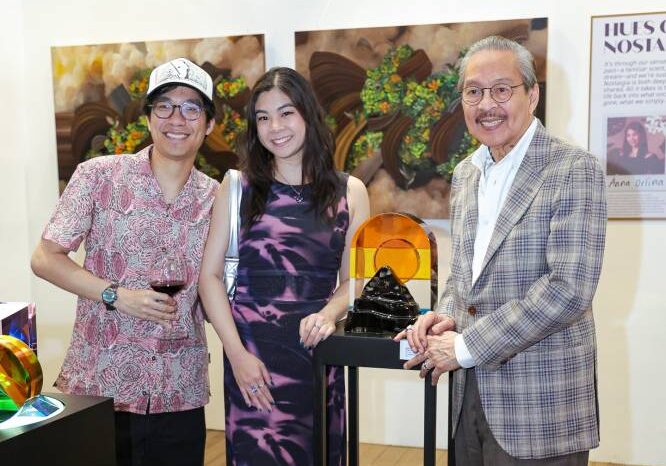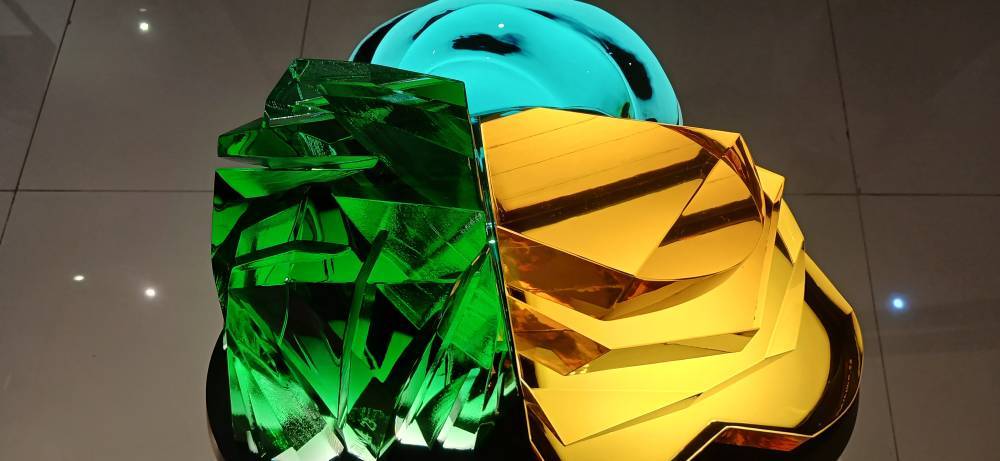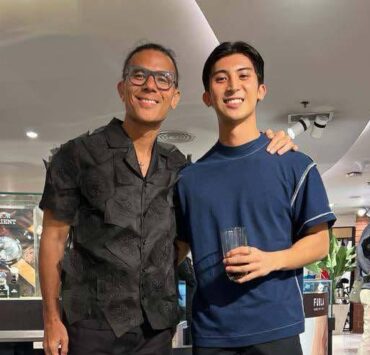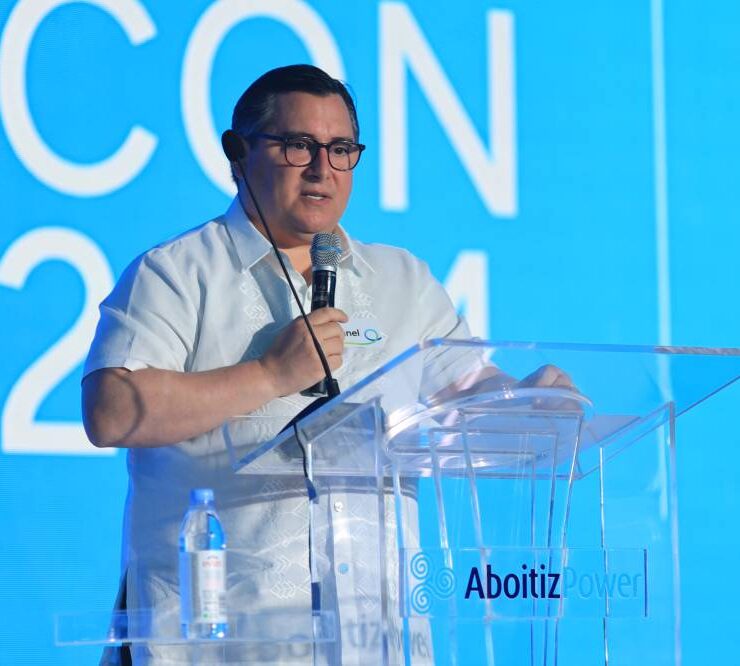A vision as clear as glass

Much like his art pieces, Ramon Orlina’s “Visions in Glass” coffee table book is heavy. Literally heavy—weighing a whopping 6 kilograms—but also heavy with a detailed chronicling of his legacy as father of Philippine glass sculpture.
And within those pages are also stories of his children Anna and Michael’s own beginnings as they follow in their famous father’s footsteps and carve out their own careers from glass themselves.
As parents, Ramon and his wife Lay Ann wanted their children to follow their own paths, with two even getting into technology-related fields. But it would seem the pull of both nature and nurture worked together on Anna and Michael. While there was no pressure—only suggestions—to try sculpture, they initially didn’t hear the call of the fine arts. Michael studied art management while Anna took up multimedia arts so she could explore different forms of art. It took going outside their father’s studio to see their future in sculpting glass.
With their father’s works just an everyday ordinary sight—not to mention the machines were a little scary—it took being exposed to other cultures and perspectives on glass sculpting when they went to the United States (upon their father’s urging) to spark their interest in the art.
“A different point of view opened up to us and what we can do with it,” said Anna. “There are so many ways and so many possibilities. After that, we got addicted to it.”
“The way I see it, in the art world where we work in, I think the artist has the most fulfilling part,” said Michael. “Who doesn’t want that? I see my dad: People know him, he’s successful, he’s famous, he’s respected. Of course, we want that, too, for ourselves.”
The siblings feel blessed to have a master as father and mentor.

Biggest blessing
“I always say it’s the biggest blessing in the world,” said Michael. “For one, there’s the shop. What’s really restrictive not just in glass sculpture but in all methods of art, but I would say especially in glass sculpture, is the studio and equipment. We share this studio and that’s a blessing.”
Anna agreed, saying that while other people who get into the field would still have to find work at a glass company after finishing their studies, she and Michael already have their own setup at home. In fact, Anna has also started her own purpose-built cold-working studio in Manila.
But while he provides them with resources and means to further their craft, Ramon is adamant that his kids find their own styles. And with what they have been learning during their studies abroad, they are able to create their own distinct techniques and form as well.
Anna, for example, excels in fusing different colored glasses together.
“I work with one glass,” said Ramon, “she was doing two or three colors in one sculpture.”
For Michael who has worked as one of Ramon’s assistants, his technique and style lie closer to his father’s. But there are limitless designs, he said, and since he pretty much knows all his father’s works, he also knows what to avoid to keep his works from being too similar to a “Ramon Orlina.” For his part, his pieces play with the transparency and texture of the glass.
But he intends to explore further. Upon the suggestion of his mom, he’s finding ways to create bigger works and installations—but not too heavy or expensive.
With the Orlina siblings keeping their father’s legacy alive, and glass sculpture seemingly gaining traction among other Filipino artists as well, the future is looking bright for glass art. But Ramon’s concern goes beyond the success of his chosen art form, but for Filipino artists as a whole.
With his relentless advocacy for the professionalization within the artist community through the implementation of artists’ resale rights, which not only will benefit artists themselves but also their heirs for 50 years after the artist’s death, Ramon is securing not only the welfare of glass artists but of all Filipino artists and the future of Filipino art as well.





















